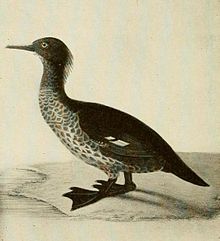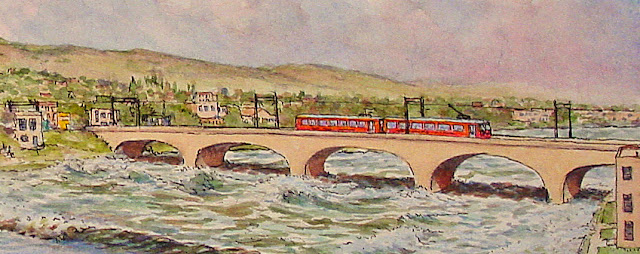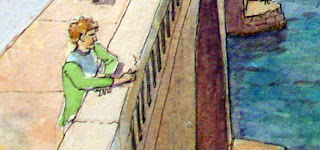Most Putney residents assumed the merganser ducks that hang around the bay were originally brought in from eastern Russia in the early 1900s for sport shooting. Rumor has it that these ducks were the descendants of north Asian mergansers that got away.
Not so!
After years of research on obscure islands south of New Zealand, ornithology expert Delilah Wiggins of Putney University has determined that New Island's mergansers are a close relative of the Auckland Merganser long thought to be extinct! See the Wikipedia article below:
This duck was similar in size to the Red-breasted Merganser. The adult male had a dark reddish-brown head, crest and neck, with bluish black mantle and tail and slate grey wings. The female was slightly smaller with a shorter crest.
This bird was first collected when a French expedition led by the explorer Jules Dumont d'Urville on the ships L'Astrolabe and La Zelee visited the Auckland Islands in 1840. Its decline was caused by a combination of hunting and predation by introduced mammals. The bird was not flightless, but rather hard to flush; it preferred to hide between rocks when pursued. The last sighting was of a pair shot on January 9, 1902. It was not found in a 1909 search, and a thorough 1972/1973 exploration of possible habitat concluded that it was long extinct (Williams & Weller, 1974).
Subsequent fossil discoveries suggest that this merganser was previously resident on the South Island and Stewart Island/Rakiura in New Zealand. Fossils of a subspecies or closely related species have also been found on the Chatham Islands. There exists a short remark mentioning "a merganser" found on Campbell Island in McCormick (1842), but this may just as well refer to the semi-marine Campbell Teal which is otherwise missing in his notes: he only mentions the Pacific Black Duck ("a New Zealand species of duck").
There are unconfirmed reports of an extant Auckland merganser population on The Commonwealth of New Island, a warmer large island west of Australia.










